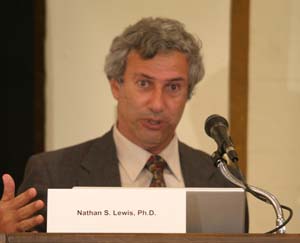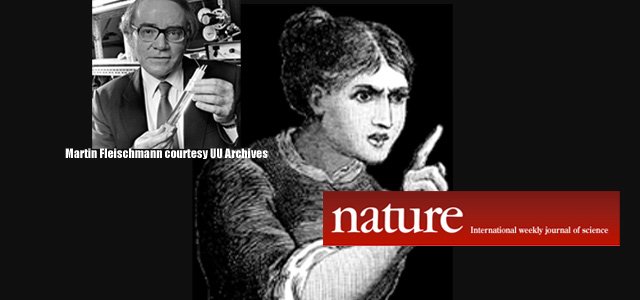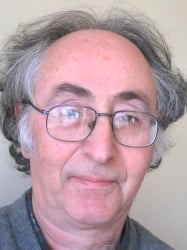 2014 is upon us, and progress in the field of Cold Fusion (aka LENR) marches steadily on. Brillouin Energy Corporation (BEC), currently operating out of California and working in collaboration with Stanford Research Institute (SRI), recently signed a multi-million dollar deal with an undisclosed South Korean company who intend to manufacture their LENR boiler technologies and outfit obsolete power plants with them.
2014 is upon us, and progress in the field of Cold Fusion (aka LENR) marches steadily on. Brillouin Energy Corporation (BEC), currently operating out of California and working in collaboration with Stanford Research Institute (SRI), recently signed a multi-million dollar deal with an undisclosed South Korean company who intend to manufacture their LENR boiler technologies and outfit obsolete power plants with them.
It has recently been confirmed through an official press release that inventor Andrea Rossi’s American distribution partner is none other than North Carolina-based Cherokee Investment Partnership (CIP). CIP has spawned a business-subsidiary, Industrial Heat LLC (IHC), apparently as a vehicle to further develop and market Rossi’s E-Cat (Energy Catalyzer) technology. IHC is also engaged in a prolonged diagnostic of Rossi’s E-Cat, the results of which will be released in an official report later this year. Even more interesting is that CIP-CEO, Thomas Darden, has been in close contact with Chinese government officials who have announced their intentions to establish a “Nickel Reactor New Energy Project”.
Also noteworthy, Defkalion Green Technologies (DGT), with bases of operation in both Vancouver and Greece, are in the process of real-time mass spectrometer measurements of their Hyperion Reactor. While not particularly important at first glance, these tests should yield very important data concerning the nuclear ash that results from reactions in Nickel-Hydrogen systems. With this data in hand, experts in the field will be better equipped to develop a comprehensive, predictive, and engineerable CF-LENR theory. In a recent press release they have also announced that: “Several third party independent tests from international organizations, universities and teams are expected to present their results thus verifying our recent technological and scientific breakthroughs. Accordingly we expect the commercialization of our technologies in the 3rd quarter of 2014.”
Maybe these commercial ventures will pan out; maybe they won’t. That is the boom-and-bust nature of business in our society (love it or hate it). But as we approach the fulfillment of a 25-year struggle to validate Cold Fusion, the question remains, why it was ever written off in the first place? If Cold Fusion was such a glaring example of “pathological science” and if it’s self-sacrificing adherents were nothing more than deluded “true believers” (as the Skeptical community often proselytizes), how is it that this “discredited” science is on the precipice of totally altering the landscape of energy, sustainability, and how we believe Science operates?
 When Martin Fleischmann and Stanley Pons made their first announcement in 1989, beside just claims of nuclear-level excess heat, they also claimed to have detected nuclear products; specifically neutrons. Beyond the ire that side-stepping the peer-review process instilled in many scientists, the claim that their discovery was a room-temperature “fusion” reaction is what really sparked off the skeptical circus.
When Martin Fleischmann and Stanley Pons made their first announcement in 1989, beside just claims of nuclear-level excess heat, they also claimed to have detected nuclear products; specifically neutrons. Beyond the ire that side-stepping the peer-review process instilled in many scientists, the claim that their discovery was a room-temperature “fusion” reaction is what really sparked off the skeptical circus.
The problem was that their neutron measurements were found to be in error. Accusations of bad science and outright fraud soon followed; most notably from nuclear physicists like MIT’s Ronald Parker and CERN’s Frank Close. Parker was the first to lob public accusations of fraud. And Close, to this day, still paints the entire incident as a clear-cut case of “fraud”, based on his interpretation of events originally put forward in his 1991 book Too Hot to Handle.
 The truth, a rather benign one, is that Fleischmann and Pons weren’t attempting to defraud anyone. Firstly, the duo’s preliminary research into heavily loaded palladium spanning from 1984-1989 was A) personally financed, and B) inspired by the work of their scientific forerunners. Interestingly enough, their predecessors (some from as early as the 1920’s) thought they might have witnessed fusion-like reactions occurring in room-temperature, electrolytic hydride systems. As curious scientists first and foremost, the two colleagues could not resist the allure of exploring such a provocative possibility. Fleischmann and Pons had already achieved more than enough prestige in their lifetimes; they had absolutely no reason or motive to risk their reputations and indulge themselves in some self-aggrandizing publicity stunt.
The truth, a rather benign one, is that Fleischmann and Pons weren’t attempting to defraud anyone. Firstly, the duo’s preliminary research into heavily loaded palladium spanning from 1984-1989 was A) personally financed, and B) inspired by the work of their scientific forerunners. Interestingly enough, their predecessors (some from as early as the 1920’s) thought they might have witnessed fusion-like reactions occurring in room-temperature, electrolytic hydride systems. As curious scientists first and foremost, the two colleagues could not resist the allure of exploring such a provocative possibility. Fleischmann and Pons had already achieved more than enough prestige in their lifetimes; they had absolutely no reason or motive to risk their reputations and indulge themselves in some self-aggrandizing publicity stunt.
When the duo arrived at their lab one morning to discover that a small cube of palladium had partially vaporized, melted through its electrolytic cell, burned through a blacktop lab-bench, and melted a 4-inch deep hole into their solid concrete floor, they finally started to believe there was something genuine about such far-out claims from the past. Based off this result, they went about trying to detect nuclear products, because they knew of no other reaction that could produce such absurd amounts of excess heat. Skeptics who attacked the “nuclear-reaction” label were not properly considering that such beliefs were motivated by the unusually high levels of excess heat sometimes witnessed.
 Because their research had been up to that point secretive, highly unorthodox, and was being conducted on university grounds, for political reasons Fleischmann and Pons could not simply approach a colleague in the nuclear physics department to assist them with measuring neutrons. They would have likely been ridiculed, reprimanded, and/or had their research shut down. However, they did eventually succeed in obtaining a neutron detector from a colleague on campus without arousing much suspicion, and soon after went about conducting measurements.
Because their research had been up to that point secretive, highly unorthodox, and was being conducted on university grounds, for political reasons Fleischmann and Pons could not simply approach a colleague in the nuclear physics department to assist them with measuring neutrons. They would have likely been ridiculed, reprimanded, and/or had their research shut down. However, they did eventually succeed in obtaining a neutron detector from a colleague on campus without arousing much suspicion, and soon after went about conducting measurements.
Because they were not full-blown experts in the area of detecting nuclear products, and because the 89’ press conference was rushed months ahead of what either man was comfortable with, the neutron data was exposed to the light of day prematurely. It was a far way from fraud, but it could be labeled perhaps as “bad science” (as long as one is being non-derogatory, sensitive to context, and/or non-judgmental in regards to their overall process/results). The detection of nuclear products was quickly discredited as artifact, and skeptical detractors hung their argumentative-hats on that point for the remainder of the controversy. Fleischmann and Pons would now be unfairly chastised as operating “outside their area of their expertise” in regards to all their results just because their neutron data turned out to be inaccurate.
Blatantly discounting and/or ignoring the discovery of excess heat was (and continues to be) the major blunder of status-quo skeptics. The fact is Fleischmann and Pons were well within their area of expertise when it came to conducting electrolytic chemistry and calorimetry; which meant they knew how to account for, as well as measure, excess heat. At the time, a number of unfounded criticisms were lobbied against their excess heat results; such as not controlling for all possible experimental artifacts that could account for the abnormal findings. However, unlike their neutron measurements, their measurements of excess heat have never been properly discredited.
For example, electrochemist Nathan Lewis of California Institute of Technology conducted weeks of research on Cold Fusion following the announcement. Ultimately he and his colleagues turned up negative results. However, when electrochemist Dr. Melvin Miles evaluated their procedure over a decade later, he found their lack of results to be a product of procedural error caused by ignorance of particular experimental parameters. This is not terribly surprising because most labs attempting to replicate the Fleischmann-Pons Effect had very little operative information to go on.
 Regardless, at the time Lewis and others seemed satisfied and emboldened by their alleged null-results and seized the moment to indemnify Cold Fusion further. Lewis even went as far as to publically declare at an 89’ American Physical Society (APS) meeting in Baltimore that the excess heat was an artifact of insufficient cell mixing; an elementary protocol controlled for by most electrochemists. Lewis’ claim was simply untrue; he was basing his unfounded judgments off his own faulty experiments.
Regardless, at the time Lewis and others seemed satisfied and emboldened by their alleged null-results and seized the moment to indemnify Cold Fusion further. Lewis even went as far as to publically declare at an 89’ American Physical Society (APS) meeting in Baltimore that the excess heat was an artifact of insufficient cell mixing; an elementary protocol controlled for by most electrochemists. Lewis’ claim was simply untrue; he was basing his unfounded judgments off his own faulty experiments.
Fleischmann and Pons’ cells were properly stirred. There were no identifiable anisotropies that could possibly account for the production of nuclear-level excess heat. This fact was clearly documented in their peer-reviewed article published in Fusion Technology. Also, Fleischmann’s presentation at an American Chemical Society (ACS) meeting soon after clearly proved the integrity of their cell-mixing; a meeting where Nathan Lewis raised no objections to the demonstration he witnessed from Fleischmann.
Another popular criticism (that is still sometimes evoked) has to do with what’s known as recombination. Recombination is the rejoining of negative ions with positive ions (in this case Hydrogen, Deuterium, and Oxygen) to form neutral molecules inside electrolytic cells. When this occurs modest amounts of chemical heat are generated and/or carried away. Perhaps this could explain Fleischmann and Pons’ results? Here is a leading expert in the field describing the process in more detail:
“When the gases created by electrolysis are allowed to leave the cell, they carry with them chemical energy that has to be taken into account. This chemical energy can be calculated using what is called the ‘neutral potential’, if no partial recombination takes place in the cell before the remaining gas leaves. The error comes from not knowing what fraction of the generated gas recombines back to D2O in the cell and what fraction leaves as D2 and O2.
If all gas recombines in the cell (which can be [initiated] using an internal catalyst) then no energy needs to be added and the results are accurate as measured. This is called a closed cell and is now used extensively. If all generated gas leaves, the calculated corrections are accurate. This is called an ‘open cell’. [Fleischmann and Pons] used open cells. Nevertheless, they determined the fraction of recombination that occurred in their cell.”
This was expounded upon by another well-respected expert in the field:
“I [agree]…any question of ‘recombination’ (or electrode depolarization) is eliminated absolutely by the use of thermodynamically closed cells (as many did), and the extent to which it occurs is very easily quantified by measuring the amount of make-up water, as [Fleischmann and Pons] did.”
To restate, recombination is an elementary consideration, easily controlled for, that most serious scientists working in this field take into account. In fact, University of Minnesota’s Professor Robert Oriani definitively answered this question as early as 1990. He had achieved positive excess heat results in his experiments, and his peer-reviewed paper published in Fusion Technology clearly demonstrated that questions surrounding experimental artifacts like recombination were most definitely controlled for.
 Worth noting is this particular paper’s back story. It had been submitted to Nature magazine prior. It was approved by both of the peer-reviewers Nature themselves selected. Then, inexplicably, the editor vetoed their decision and rejected the paper. Oriani’s results were unimpeachable; politics and bias was clearly at play. This should not be surprising, as most “premier” science journals nowadays are underwritten by huge, status-quo multinationals.
Worth noting is this particular paper’s back story. It had been submitted to Nature magazine prior. It was approved by both of the peer-reviewers Nature themselves selected. Then, inexplicably, the editor vetoed their decision and rejected the paper. Oriani’s results were unimpeachable; politics and bias was clearly at play. This should not be surprising, as most “premier” science journals nowadays are underwritten by huge, status-quo multinationals.
While there is much more to say on the topic overall (which I will save for Part II), this preliminary analysis suggests that widespread claims of excess heat have been wrongfully ignored for over 25-years based on a set of totally fallacious arguments. Thus far, dogma has won out over the scientific method. Simply put, skeptics wrongfully threw out the baby, excess heat, along with the bathwater, the nuclear-reaction hypothesis. Ultimately, what does it really matter if it’s nuclear fusion or not?







